An ethical, principled approach to donors and fundraising: a strategy case study from World Land Trust
Part one of three exploring the management of fundraising from a CEO’s standpoint at the World Land Trust.
- Written by
- John Burton
- Added
- November 08, 2018
Editor’s note. The context behind this series:
This short series from John Burton sets out to capture in detail one CEO’s view of fundraising and how it should or shouldn’t be done. SOFII is publishing it in the belief that CEO/ senior management team perspectives on fundraising are rare and of value. As such, it’s an opinion article, not a case history and it contains views that many readers might disagree with. So, please do add your comments and opinions below, as this will provide a more rounded view, encourage debate and advance understanding of the subjects and issues raised. The context behind this one individual’s critical perspective on how fundraising should or shouldn’t be done is the author’s 40+ years of voluntary sector leadership throughout which he has worked with and supported fundraisers and their teams and listened to the views of many donors. While SOFII suspects the author is being deliberately provocative in places, this experience has led John and his charity to adopt some practices and avoid others. So, SOFII welcomes constructive comment from all fundraisers, whether arguing against his views or supporting them.
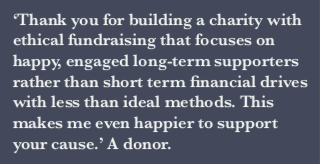
The management of fundraising – a CEO’s view
An ethical, principled approach to donors and fundraising: a strategy case study from World Land Trust.
By John A Burton, founder and CEO (from 1989-2018)
Contents
Part 1 • Why WLT exists and what it does. How we think of and treat our donors. WLT’s fundraising USP. It’s not just about money. • Appendix to Part 1: Background – John Burton’s experience and charity roles.
Part 2 ( coming next month) • Why World Land Trust does some forms of fundraising and not others. Ethical management, board and governance. Controversial issues. Acceptable and unacceptable fundraising. Investing in what works and keeping donors.
Part 3 (scheduled for January 2019) • Trust and transparency: why it’s the most important issue of all. What happens when a World Land Trust appeal raises more money than is targeted? Plus, three blogs: 1. Criticising other charities. 2. Costs and overheads. 3. John Burton’s Guide to Evaluating a Charity.
John A. Burton
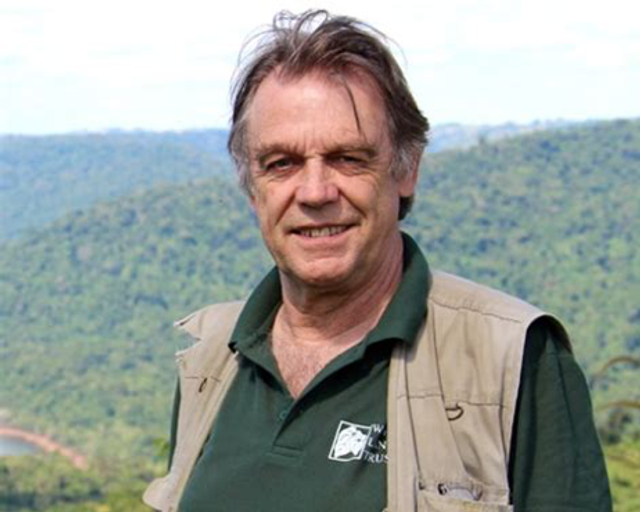
After leaving school, John joined the Natural History Museum in London as an Assistant Information Officer. He left in 1969 to pursue a freelance career initially as a natural history writer and journalist, but soon moved into conservation.
Since then he has worked for many high profile international environmental organisations, including Friends of the Earth (as a consultant) and Fauna and Flora International (as Chief Executive). He set up the first TRAFFIC offices of the Species Survival Commission (SSC) for The International Union for Conservation of Nature (IUCN), has been involved with the Wildlife Trade Monitoring Unit and was founding chairman of the Bat Conservation Trust.
John has been a regular columnist with New Scientist, Assistant Editor of Animals magazine (now BBC Wildlife Magazine) and a natural history author specialising in field guides including guides to European mammals, North American mammals and European reptiles and amphibians. John has written or edited more than 40 books including writing six children’s books and editing several multi-author works including the National Trust Book of British Wildlife, Owls of the World and the Atlas of Endangered Species. He has written several books on garden wildlife. John has consulted for a wide range of government, intergovernmental and commercial agencies, including USAID, the World Bank, CITES, DFID, English Nature and others. Recently he has specialised in training conservationists, with an emphasis on fundraising for land purchase and establishing small NGOs.
In the 1970s and 1980s, John was a regular broadcaster, presenting Countrysearch and working with the legendary Johnny Morris in Animal Magic, as well as regular broadcasts on the BBC World Service.
In 1989 John founded World Land Trust (WLT). Since then, having raised over £25million for purchasing and protecting land in Africa, Asia and Central and South America, WLT has saved half a million acres of threatened habitat. In 2013 John was named Natural Heritage Champion by the Charity Staff Foundation.
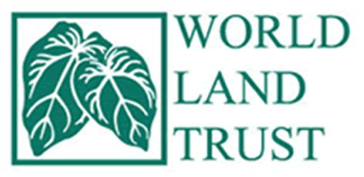
Why are we here? And what’s this about?

I have been ‘ranting’ in my blog and at any other opportunity, on and off for over a decade, about what I see as the failures and faults in the charity fundraising sector. I get very annoyed when so-called fundraisers speak in terms of ‘customers’ and use similar business-speak. In fact I have always slightly distrusted the very concept of a professional fundraiser. To me and the people I work with, we are all fundraisers and the public are donors and by their very nature, generous. And they are I hope no different to you or me. Those of us involved in raising funds for our cause should operate as a team. I’m a conservationist and writer on wildlife who also happens, in the course of these activities, to be able to raise funds. But I need a team with a wide range of abilities and experience working with me (not behind or under) in order to do that. And I could no more raise funds for a Bible-thumping charity than I could sell a washing machine. In fact, that is what I often think of when thinking of professional fundraisers: washing machine salesmen (or women), who tomorrow might be selling second hand cars. See what I mean about ranting?
To me, the key to raising funds and successful charity management is all about integrity, honesty and transparency. One hundred per cent. There are plenty of perfectly sound arguments for doing it a different way, and I am not going to say they don’t work. But they don’t work for me and they don’t work for a lot of the donors I meet either. By being as honest, open and transparent as possible, WLT has shown steady and sustainable growth. And finally, after many discussions with colleagues running similar organisations, I have concluded that there are also limits to growth. Once an organisation gets to a certain size, it cannot be managed by a single person and it is liable to lose focus. But more of that later.
This account is very much a personal story, based on more than 40 years of managing small charities. It is also based on nearly 60 years of being involved in charities. When I first became involved I don’t think I was really aware of what a charity was.
This is a story that almost exclusively involves wildlife, natural history and environmental and conservation charities and societies. Having worked for a number of medium to medium-large charities, with my wife Vivien and a few friends we created World Land Trust in 1989.
Not all of my past activities have been successes and it is as important to learn from mistakes and failures as it is from success, particularly if mistakes are likely to be repeated. In the appendix I have listed all the NGOs that I have been a member of over the past 60 years, together with a brief summary of my work history and business involvement. I am fortunate in that I have had a very wide range of activities over a rather long period of time, but I have also been able to mostly work in areas that I actually enjoy.

Since 1989 when we founded World Land Trust I have been closely involved with the rapidly developing technology of the internet. WLT was among the first charities to recognise the importance of the internet for fundraising and I have also been writing a blog since 2009. It was as an indirect result of these blogs that this account has come about. I often used the blog for sounding off, for ranting about issues that annoyed me and issues where I thought that other charities were simply wrong. It was Ken Burnett, doyen of charity fundraisers, who had given me some free advice back in the 1980s (advice which I followed throughout my career as a senior executive in charities), who read my occasional rants and suggested they were worth writing up. In fact he agreed with much of what I had written and recognised that I had indeed taken his advice to heart. And this is the result of his encouragement. I also have to note that I have recently stood aside as CEO and that not all my Board have agreed 100 per cent with my approach in the past. I have little doubt that things will change in the future, so this really is an account of the past and a personal view only. The founders of charities’ by definition have to be innovators and usually have considerably more flexibility and freedom than their successors. They are also often willing to take considerably more risks than their successors. It is of course impossible to condense seven years of blogs into a short three-part series, so anyone interested can visit the archive on the World Land Trust website.
Finally, I would like to thank Ken Burnett for suggesting I write this document, for thoughtful discussions and helping structure it. All opinions except where stated otherwise, are personal.
Why World Land Trust exists.
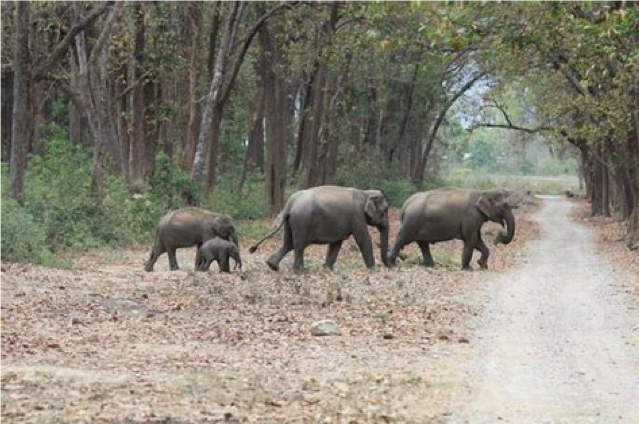
When we founded World Land Trust there was a very clear niche – a gap in the market. No other organisation in the United Kingdom was dedicated to conserving land for wildlife on an international scale. There were several doing it in the UK – notably the county wildlife trusts, the RSPB and the National Trust. And while one or two had acquired overseas properties, notably in the Falkland Islands (Islas Malvinas) and the Seychelles, no one organisation was devoted to this alone. WLT started as a single project to raise funds to help purchase 110,000 acres of threatened forest in Belize. There was a good supporter base of ex-servicemen who had spent time in the British garrison there. And most of them seem to have enjoyed being there. Having successfully completed the fundraising as a partnership with Massachusetts Audubon Society and The Nature Conservancy (USA) and raised $6.5 million between us, a review concluded that there was indeed a need for a trust to do more of the same in other parts of the world. So, we embarked on two further projects: in Costa Rica to extend a National Park and to buy an island in the Philippines which was being threatened by development as a resort. By the mid 1990s we had demonstrated that there was indeed a clear need for a charity to raise funds for land acquisition. However, parallel with this we had already started to evolve a new, and distinctly different approach to disbursement of our funds. The original project had created an entirely new NGO: Programme for Belize (PfB). In its early days I was a member of the Board along with two or three members of Massachusetts Audubon Society. But we all agreed that it was important for us to step aside as soon as possible and for the Board and the organisation to be entirely Belizean. The first setback came early on when it was clear that the Belizean organisation lacked the capacity to raise funds, consequently WLT funded a technical advisor for one year, Roger Wilson, an experienced conservationist. One of the conditions that Roger laid down was that he was to be responsible to the MD, not to the WLT as this would help build institutional capacity and strength. At the end of the year PfB asked for his funding to be continued. In many ways that was the start of a model that Roger and I have continued to develop and refine over the years. And it is one of the reasons WLT not only exists, but has strong projects in the field.
WLT is led by its overseas partners. By ensuring they are strong, by providing institutional support whenever requested and by having a policy of interfering in the management of the partner as little as possible, WLT has developed a culture of trust. This is not only one of the reasons why WLT exists, but is genuinely respected by its partners. We exist because our partner NGOs need us. On many occasions it has been referred to as a ‘family’.
How we think of and treat our donors.

WLT does not have a large pool of donors, but it has been steadily growing, particularly over the past decade. When we were founded we made a conscious decision to not have members. Having run a membership organisation in the past I was very aware of the issues and complications involved. Our donors in the early days came to us almost entirely as a result of newspaper advertising or word of mouth. A significant (but unknown) proportion of our supporters came from previous friends and acquaintances and include high profile naturalists and conservationists. At the launch of our original fundraising drive, friends and supporters included David Attenborough, David Bellamy, and Gerald and Lee Durrell, as well as staff of the BBC Natural History Unit, several environmental journalists and staff of the Natural History Museum – nearly all of these were personal friends and colleagues.
Consequently, from the start we thought of our donors as well-informed, often scientifically trained, intelligent people. We did not talk down, but at the same time, as they came from a wide range of backgrounds, we made sure our communications were clear, concise and relevant. For several years WLT consisted of Viv, myself part time, and an assistant. Both Viv and I came from a background in publishing and communications and Programme for Belize was originally run by Arnold Brown (of Massachusetts Audubon) who also had a background in communications and was particularly strong on the design side. Throughout our history we have tried to keep up to date and ensure our communications are well designed. At regular intervals we have used questionnaires to assess what our donors think of us, what projects they want to support and what communications they want from us. We have always had a policy of never sharing the names of donor with any other organisation – and to do so now would need explicit permission from all our supporters. More recently we created a Friends of WLT scheme to encourage the committed donors to make regular donations to WLT’s action fund. The Friends have grown in number steadily, even during the recession. We also created a group, Green Ink, which comprises supporters who are published authors and who have donated one or more of their Public Lending Rights – another well-informed group, part of a different but often overlapping and often high-profile network.
Fundraising and WLT’s USP
WLT has over the years developed a unique selling point (USP). In reality it ought to be true of all charities, but rarely is. Our USP is that we try to be as transparent and honest as we can about how we raise funds, how we spend them and what our overheads are. This has meant that we do not have ‘small print’ of any size. If we say we are raising funds to save rainforest in Brazil, that is where the money will go. We keep our overhead under 18 per cent and publish our accounts on our website. We also publish summaries of our board meetings on our website and have FAQs that genuinely answer questions posed by the public (even if they are not frequently asked – but are answered for the sake of transparency). We also make it very easy for members of the public and other potential donors to contact the right person in the organisation, by publishing contact details.
We also recognise that websites are very easy to create and give the appearance of a large organisation, when in reality only two or three people are involved. Consequently, we list all our staff, with photographs and short biographies. We do the same for all the board members.
We have a policy of acknowledging all donations (unless we are specifically instructed by the donor not to.) This is common sense, since many donors will make a small donation to see what the response is like. We also encourage potential donors to compare us with other charities and have provided a checklist of the sort of issues they should be concerned about (see part 3, how to evaluate a charity).
And it’s not just about the money
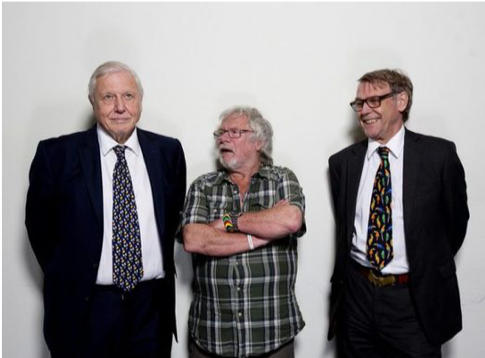

We live in a post-Thatcherite society where all too often efficiency is equated with profit. But there are numerous different efficiencies, as anyone working in the NHS can tell you, cutting costs in one direction increases costs in others. And the same applies when running a charity. It is actually quite easy to raise large amounts of money, simply by spending large amounts on raising it, as I have discussed elsewhere in this feature. But raising large amounts of money also means spending it. And this can also create problems. Too many NGOs believe that problems can be solved by throwing money at them. I have experienced this both in Africa and South America. NGOs, of course, accept the money and in many cases deliver the ‘project’. But then, what happens when the money dries up? And an NGO can grow very rapidly when money is thrown at it and then become dependent on one or two donors, who when they decide to change their priorities, leave the NGO teetering on the edge of an unsustainable cliff. In the case of WLT, buying more and more land and handing it to the local NGO had inherent problems – the more land we gave them, the more responsibility for long-term management they incurred. Consequently, it was critical that we looked at a wide range of creative mechanisms for long-term support. Eventually we realised that WLT’s mission could not always be carried out by local NGOs. I have often observed that probably more projects in third world (less developed) countries fail by having too much money, than fail because of too little. An important factor in this particular equation is that the majority of the decisions concerning the application of funds are, unusually, ultimately made by the donors. WLT has tried very hard to move away from this and empower the local NGO as much as is possible without abrogating its fiduciary responsibilities.
As a footnote to the idea that ‘money isn’t everything’, I should mention that spending money properly is just as important as raising it in an ethical manner. And as our alliance of partner NGOs have pointed out, the problems we are addressing are so serious, that we should never sit on reserves, we should spend it on action. This of course creates its own dilemma.






















